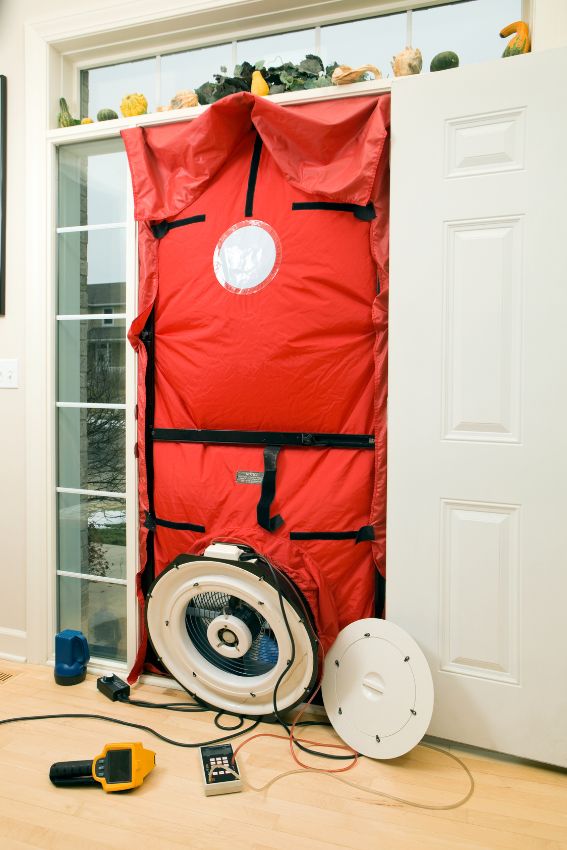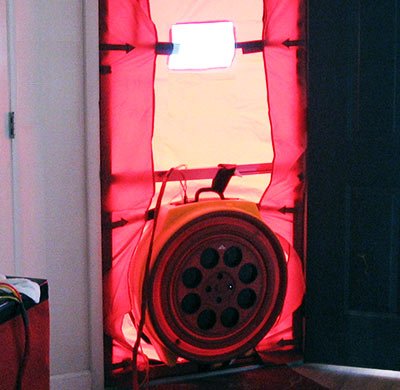Make your home hypoallergenic with energy testing
Make your home hypoallergenic with energy testing
Blog Article
The Function of Energy Testing in Achieving an Airtight Remedy for Your Residential property
Energy screening is important for building owners seeking to develop an impermeable atmosphere. It identifies air leakages and ineffectiveness that can compromise energy performance. Typical perpetrators consist of spaces around doors and windows. Making use of techniques like blower door examinations and thermal imaging, house owners can acquire understandings into their residential or commercial property's susceptabilities (energy testing taylors sc). Recognizing these findings is crucial. What actions should be taken once air leaks are recognized? The answers hold the secret to boosted comfort and savings
Comprehending Energy Screening and Its Value
Power testing plays an important function in evaluating the airtightness of frameworks and buildings. By determining air leak, this method supplies critical understandings right into a property's power performance, thermal comfort, and total efficiency. Airtight buildings reduce energy consumption, making sure that cooling and heating systems operate efficiently. This testing process usually entails techniques such as blower door tests, which create a regulated setting to recognize unplanned air pathways.Understanding the importance of energy screening extends beyond compliance with structure codes; it cultivates an aggressive approach to sustainability. Identifying air leakages early can bring about prompt removal, inevitably boosting indoor air high quality and lowering energy costs. Additionally, power screening adds to the durability of building materials by reducing dampness build-up and relevant damage. As understanding of environmental impact boosts, energy screening comes to be a vital tool for property owners and contractors going for high-performance buildings.
Common Sources of Air Leaks in Properties
Determining typical sources of air leaks is important for improving a residential or commercial property's power performance. These leaks usually happen in different locations of a structure, considerably influencing heating & cooling expenses. Usual wrongdoers include voids around doors and windows, where seals may wear away in time. In addition, electric outlets and buttons can develop pathways for air exchange if not effectively shielded. Attics and cellars are likewise regular resources, particularly where walls satisfy the structure or the roof. Other prospective leak points consist of pipes penetrations, venting systems, and the locations surrounding chimneys. Older properties might experience from weakened building products, increasing susceptability to air infiltration. By recognizing these typical sources, homeowner can take positive steps to secure leaks, thus improving general power efficiency and comfort within their spaces. Dealing with these issues is a crucial component of developing a closed remedy for any type of home.
Techniques of Energy Testing: Blower Door and Thermal Imaging
Effective energy testing methods, such as blower door examinations and thermal imaging, play an important function in detecting air leakages within a property. The blower door test entails depressurizing a building or pressurizing to measure airflow and recognize leakages. A calibrated fan is installed in an outside entrance, and the resulting stress difference highlights locations of undesirable air seepage. This approach measures the general airtightness of the structure.Thermal imaging enhances blower door tests by visually finding temperature level variants on surfaces, exposing surprise air leaks. Infrared electronic cameras record warmth loss or gain, permitting precise identification of issue locations, such as improperly protected walls or voids around doors and windows. energy testing. Together, these techniques offer a comprehensive analysis of a residential or commercial property's power efficiency, making it possible for property owners to deal with air leaks efficiently and improve total efficiency
Advantages of Identifying Air Leaks
Determining air leakages uses considerable benefits for power performance and interior comfort. By sealing these leaks, structures can decrease energy usage, causing reduced utility expenses and a lowered carbon footprint. Additionally, improved airtightness adds to an extra stable interior setting, improving general convenience for owners.
Energy Effectiveness Improvements
Discovering air leakages is crucial for enhancing power effectiveness in buildings. Recognizing these leaks allows building owners to attend to locations where conditioned air escapes or unconditioned air goes into, bring about considerable energy savings. By sealing spaces and splits, structures can preserve a consistent temperature level, decreasing the need on heating and cooling down systems. This not just decreases power bills yet additionally lessens the environmental influence connected with raised energy consumption. Additionally, energy effectiveness improvements add to a building's total sustainability, making it an extra attractive alternative for eco-conscious customers or occupants. Inevitably, focusing on air leakage detection and remediation assists maximize energy use, advertises responsible resource management, and supports long-term monetary advantages for homeowner.

Boosted Indoor Convenience
Attending to air leaks not only results in power cost savings yet also significantly improves interior comfort. When air leakages are efficiently recognized and sealed, temperature level policy within a home comes to be extra efficient. This results in constant interior temperatures, eliminating cold drafts in wintertime and hot places in summer. Improved insulation likewise reduces sound pollution from outdoors, producing a quieter and more calm living atmosphere. In addition, boosted air quality is accomplished by minimizing the infiltration of exterior pollutants, allergens, and humidity, adding to the total health of owners. Consequently, property owners experience an even more enjoyable environment, fostering leisure and performance. Ultimately, rectifying and acknowledging air leaks is crucial for accomplishing optimal interior convenience throughout the year.
Exactly How Power Screening Boosts Convenience and Indoor Air Top Quality
Energy testing plays a vital function in boosting temperature level policy within indoor rooms, making certain a comfy and consistent setting. By sealing and identifying air leakages, it also greatly minimizes the infiltration of contaminants, consequently enhancing interior air quality. This twin impact promotes overall wellness for occupants.
Improved Temperature Level Policy
Effective temperature law significantly adds to both convenience and indoor air high quality, making it a vital emphasis for modern-day building style. Power screening plays an essential duty in achieving this guideline by recognizing locations where heat loss or gain happens, permitting targeted improvements. By making sure an impermeable structure envelope, power testing helps maintain regular interior temperature levels, decreasing the requirement for excessive heating or air conditioning. This stability improves owner comfort, as changes in temperature can result in pain and dissatisfaction. Additionally, reliable temperature control can boost indoor air quality by reducing the threat of condensation and mold development, which flourish in irregular temperature level problems. As a result, energy screening is essential for optimizing temperature level administration in business and residential buildings.
Reduced Toxin Infiltration
While numerous factors add to interior air high quality, reduced toxin seepage sticks out as a crucial element that energy testing can significantly improve. Power testing identifies air leakages and weak factors in a building's envelope, which may enable outdoor toxins, allergens, and dampness to go into indoor areas. By securing these leakages, homes can efficiently restrict airborne pollutants, leading to a much healthier environment. Boosted airtightness not only boosts comfort yet also decreases the problem on heating and cooling down systems, resulting in power financial savings. In addition, decreased pollutant seepage promotes far better total health for occupants, as cleaner air promotes respiratory health and wellness and decreases allergic reaction symptoms. Energy testing plays a crucial duty in producing both an energy-efficient and health-conscious living room.
The Financial Effect of Power Testing on Energy Expenses

Steps to Take After Energy Screening Outcomes
As soon as power screening outcomes remain in, homeowners ought to meticulously evaluate the findings to establish one of the most reliable course forward. The very first step involves determining the locations that need enhancement, such as air leakages or insulation shortages. Homeowners ought to after that focus on repairs based upon the extent of the concerns and their possible influence on power efficiency.Next, it is suggested to talk to specialists who focus on power effectiveness to design an extensive action plan. This may consist of remedies like securing voids, including insulation, or upgrading windows and doors.After implementing the necessary adjustments, a follow-up power test can identify the effectiveness of the fixings. Constant monitoring is also necessary to assure that the property keeps its closed status with time. By complying with these actions, house owners can significantly Read Full Article enhance their building's energy performance, resulting in decreased energy bills and boosted comfort.
Often Asked Concerns
How Usually Should I Conduct Energy Examining on My Home?
The regularity of energy testing must generally be every few years, or following significant improvements. Routine assessments assist recognize effectiveness renovations and assure that the residential property keeps optimal power efficiency gradually, adapting to transforming conditions.
Is Power Testing Necessary for New Constructions?
Energy testing is crucial for new buildings, as it determines possible air leak and insulation issues - energy testing taylors sc. Carrying out these examinations warranties power efficiency, enhances indoor comfort, and satisfies structure codes, inevitably leading to long-term cost savings
Can I Carry Out Energy Testing Myself?
Energy testing usually needs specific tools and experience. While some homeowners might try standard analyses, specialist solutions ensure precise results and effective identification of concerns, inevitably bring about far better power effectiveness and comfort in living spaces.
What Is the Cost of Professional Power Screening Solutions?
The expense of professional power screening services usually ranges from $300 to $1,500, depending on home intricacy, place, and size. Homeowners need to take into consideration possible power cost savings when assessing the investment in these solutions.
The Length Of Time Do Power Testing Results Generally Last?
Energy testing results normally continue to be valid for one to three years, depending on aspects like structure modifications and ecological changes. Normal updates are advised to assure precision and preserve efficient energy efficiency criteria. Effective energy screening approaches, such as blower door tests and thermal imaging, play an essential function in detecting air leakages within a building. Identifying these leakages allows residential or commercial property proprietors to resolve areas where conditioned air escapes or unconditioned air gets in, leading to significant power savings. Energy screening recognizes air leakages and weak factors in a structure's envelope, which might allow outside contaminants, irritants, and dampness to get in indoor areas. As home owners increasingly seek to minimize their energy expenses, the function of energy testing comes to be crucial in recognizing leaks and inadequacies. Property owners must after that prioritize repair work based on the severity of the problems and their possible impact on power efficiency.Next, it is suggested to consult with specialists who specialize in power performance to devise a thorough action plan.
Report this page